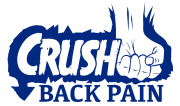Modic changes are a term used to describe disruption of the vertebral endplates and the vertebrae themselves.
Modic changes are classified into type I, type II, and type III.
Type I Modic Changes
Vascular development in the vertebral body, with inflammation and edema. No trabecular bone damage or bone marrow changes. Type 1 modic changes represent the earliest stage and are the most biologically active. They are believed to represent an inflammatory reaction in the bone marrow of the vertebral body.
Type 2 Modic Changes
Parts of the red, cellular bone marrow of the vertebrae are replaced with fatty tissue.
Type 3 Modic Changes
Fractures of the trabecular bone with trabecular shortening and widening.
Are Modic Changes Associated with Lower Back Pain?
The evidence concerning rather or not Modic changes are a source of lower back pain is conflicting. Some studies show evidence of Modic changes being correlated with lower back pain while others show the opposite.
A 2015 study by Brinjikji et al. found a significant association between type 1 Modic changes and low back pain in adult patients 50 years of age and younger. Even so the authors stress that the findings should not be interpreted as causation, only that an association was apparent.
A 2018 meta-anaylis that pooled the results of 31 different studies looking at Modic changes and lower back pain found conflicting results. 15 of the studies (48%) found a positive association between Modic changes and low back pain. One study found a negative association.
A 2019 study by Udby et al. followed 204 back pain patients for 13 years. Baseline MRI was taken. 40% of the 204 back pain patients had Modic changes. The authors hypothesized that degenerative findings, including Modic changes would be associated with increased long-term pain and disability. The results of the study surprised the authors. “Contrary to our hypothesis, none of the degenerative MRI changes at baseline was associated with worse outcomes at 13-year followup,” said Udby. So in this study the Modic changes were not associated with increased low back pain and disability.
Surprisingly they were associated with the opposite. “Baseline Modic changes were associated with significantly less long-term disability at 13-year followup,” Udby reported.
A 2018 study by Romero-Munoz L, et al. took MRI scans of two groups of patients. One with Modic changes and one without. Both groups were followed for 10 years. There were no differences between the two groups in lower back pain intensity, degree of impairment, or need for treatment.
“There is no relationship between Modic changes in MRI and greater intensity of lumbar pain or need for medical or surgical treatment at 10 years of follow-up. Modic changes cannot be considered a sign of bad prognosis by themselves, or an indication for surgery,” according to the Spanish researchers.
So…are modic changes a cause of lower back pain?
According to the medical literature there may be an association, though it depends on what research you look at. There is no medical evidence that Modic changes cause lower back pain.
Some researchers are now hypothesizing that modic changes could be protective and may be associated with less pain and disability.
References
Brinjikji W, et al MRI findings of disc degeneration are more prevalent in adults with low back pain than in asymptomatic controls: A systematic review and meta-analysis, American Journal of Neuroradiology, 2015; 36(12):2394–9.
Herlin C, et al Modic changes—their associations with low back pain and activity limitation: A systematic literature review and meta-analysis, PLoS One, 2018; 13(8):e0200677.
Udby P, et al, Modic changes are not associated with long-term pain and disability, Spine, 2019; 44(17):1186-92
Romero-Muñoz L, et al, Are Modic changes in patients with chronic low back pain indicative of a worse clinical course? 10 years of followup [published online ahead of print March 31, 2018], Revista Española de Cirugía Ortopédica y Traumatología, doi:10.1016/j.recot.2018.01.005.
FAQ
Injury, inflammation, and bacterial infection have all been associated with Modic changes. Recent research points to each of these processes being linked, opposed to separate causes. It’s likely that injury, inflammation, and bacterial infection occur simultaneously to initiate Modic changes on MRI.
Modic Type I Vertebral Endplate Changes: Injury, Inflammation, or Infection?
A disruption of the vertebral endplate and the vertebral bone. The different types of Modic changes represent different stages of the process. Modic changes are characterized by inflammation, high bone turnover, and fibrosis.
Injury, inflammation, and bacterial infection have all been implicated in Modic changes, and may all play a concurrent role. Modic type 2 changes are characterized by vertebral bone marrow being replaced by fatty tissue.


